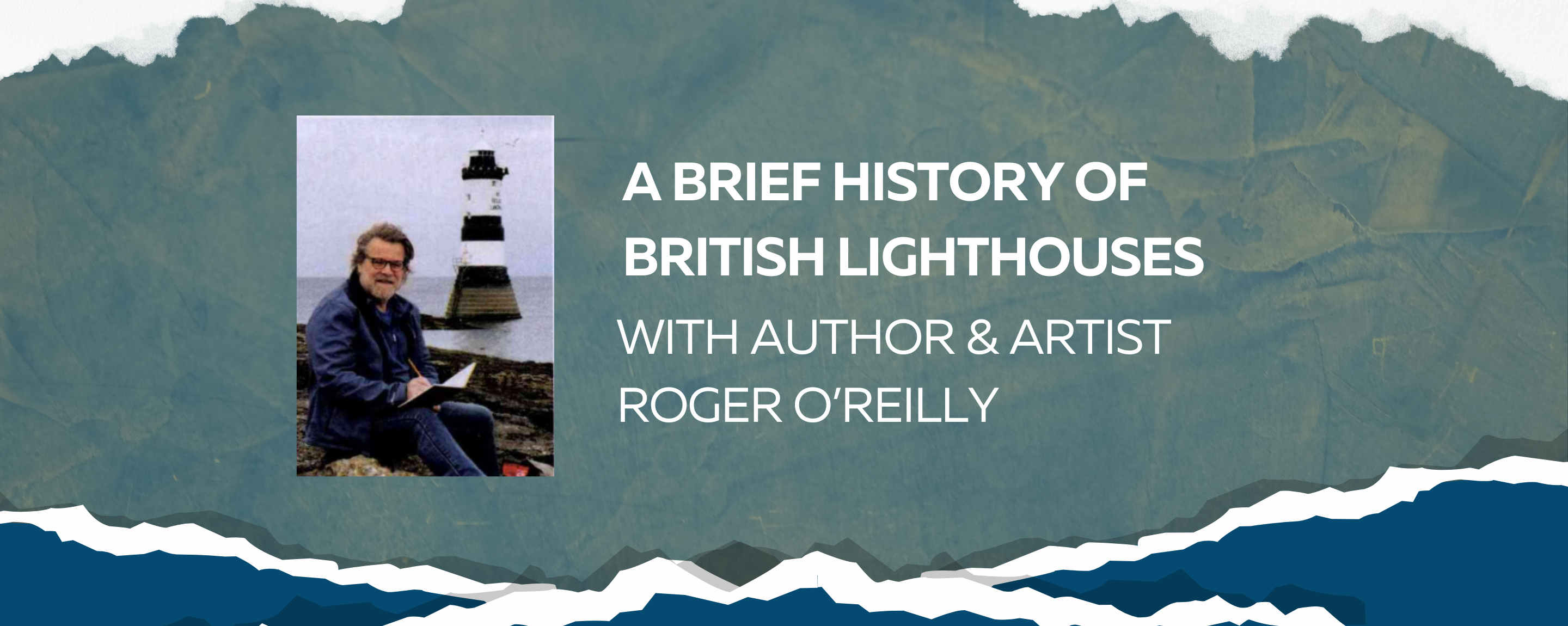Haunted Lighthouses of Britain by Roger O’Reilly

There can be few lighthouses that do not have a ghost story or some tale of the ethereal attached to them. Often isolated and watching over vessels of all stripes slipping into an out of port under cover of darkness, they are witness to a shadowy world that often leaves more unexplained than illuminated.
At Whitby, in this most famously eerie of all towns, the west pier has its own tall tale. One stormy night the keeper, having temporarily left the tower (some say he was engaged in the local game of knurr and spell), looked over his shoulder and noticed that the light had gone out. Hurrying back and soaked to the skin, he sped up the steps to reignite the lantern. Having rekindled the lamp he attempted to go back down, but slipped and fell headlong into the void departing this mortal coil. Some folk say that on a black blustery night, a lonesome figure can be seen making his way with a covered lantern towards the lighthouse before his disappears through the locked and bolted door.
On the Pembrokeshire in coast in 1801, an altogether more unsettling tale unfolded when one of the two keepers died and his colleague went slowly mad, waiting almost four months for rescue while his deceased partner who had been fastened to the outside rail in an attempt keep the stench of death outside the cramped quarters, stared through the window at him accusingly swaying in the howling wind and knocking incessantly on the storm battered pane. Until that time, two keepers had been deemed sufficient, but from then on, three were always posted on offshore stations.
Sometimes the spirits can seem a little more benign, such as at the Souter Lighthouse on the Sunderland coast where it is reputed to be haunted by Grace Darling’s niece Isabella, who lived here in the late 1880s. Staff have reported spoons floating in mid-air, unexplained temperature drops, and some have even reported having been clutched by unseen hands.
Probably the most famous story strange goings on concerns the Eilean Mór lighthouse on the Flannan Isles about 115km off the Scottish mainland in the Outer Hebrides. The steamer Archtor noted that the light had gone out one stormy evening in December 1900 and the alarm was raised. When a relief ship came to investigate, the keepers were nowhere to be seen. The report stated that the doors were closed, the clocks had ominously stopped, the beds were unmade and that two of the keeper’s oilskins were missing, but the third set was still in place. No trace of the men could be found. The disappearance of the three men, coupled with the death of an assistant keeper a few years later gave Eilean Mòr a sinister reputation. The popular poem, “Flannan Isle” by Wilfrid Wilson Gibson took a number of liberties with the truth and made the story familiar to the wider public, sealing the episode’s fate as a suspense mystery worthy of Edgar Allen Poe.
Roger O’Reilly is a lighthouse expert, artist and founder of Lighthouse Editions. O’Reilly’s incredible book Legendary Lighthouses of Britain is available to pre-order now and is releasing April 9th 2024.



